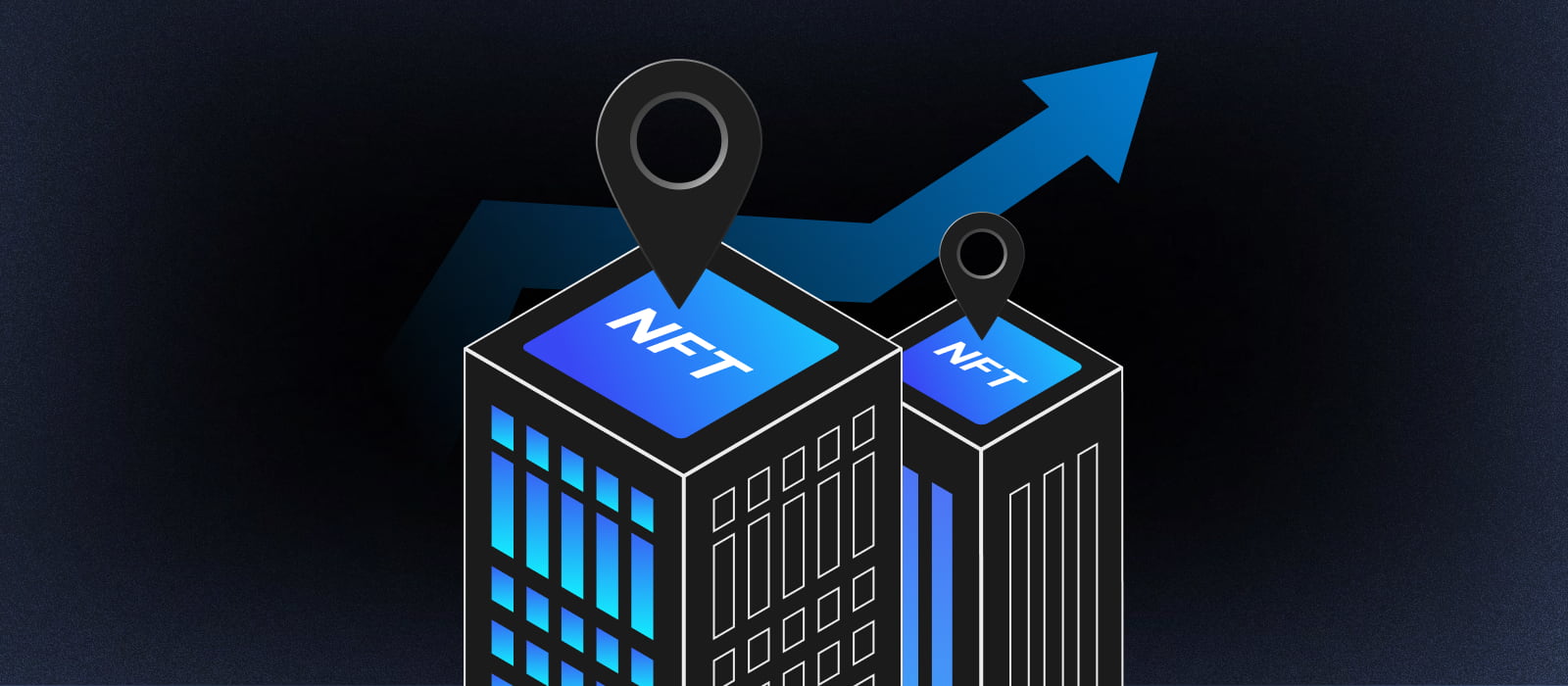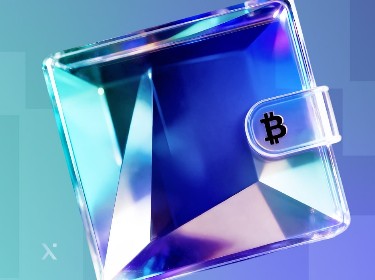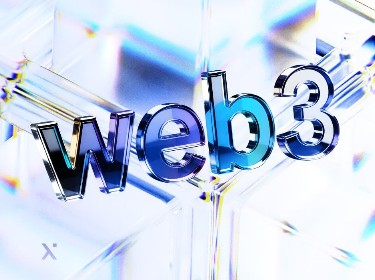A real estate NFT marketplace is a platform where people can buy and sell virtual property in the form of non-fungible tokens. But what exactly goes into developing this kind of platform and what key factors should you keep in mind along the way?
NFTs have evolved far beyond just fun images or gifs. These days, they are being used in all sorts of innovative ways, from verifiable credentials to decentralized identifiers and even event tickets.
One area where NFTs have made an impact is real estate, with NFT real estate marketplaces becoming increasingly popular.
However, building these platforms is not straightforward as the process requires meticulous attention to detail like avoiding NFT scams, building the supportive community, launching a promising ICO, etc. But we know how to do it.
Our team has helped clients from industries like HoReCa, media and entertainment, retail and eCommerce development, and real estate build NFT marketplaces that empowered them to hit their goals, boost customer satisfaction, and open up new business opportunities.
In this guide, we will walk you through how to develop a real estate NFT marketplace using real-life examples from our past projects. Our goal is to give you all the key insights you need to create a real estate NFT marketplace that will help your business thrive.
The three projects we will be referencing include:
- A Flow-powered NFT marketplace for precious stones
- An NFT marketplace in the restaurant industry
- An STO investment platform in real estate
Let’s start!
What are the benefits of developing a real estate NFT marketplace?
![]()
A real estate NFT based smart contract development brings a modern twist to a centuries-old industry as well as provides solutions to some of the biggest challenges that real estate has been faced with.
Now, let’s explore the five key benefits a real estate NFT marketplace offers for both developers and users.
Faster and easier transactions
A real estate NFT marketplace cuts out the hassle of waiting for paperwork or dealing with third parties. These benefits are possible thanks to the underlying blockchain technology that lets buyers and sellers make property deals directly, much faster, and with fewer costs involved.
Global opportunities
Since real estate is tokenized as NFTs, you can open up your market to buyers and investors from around the globe. This means your transactions are not limited by location — anyone from anywhere can join in.
What’s more, when our experts were working on the Flow-powered NFT marketplace for precious stones (even experts in tokenization of gold were attracted!), we went above and beyond by engaging our metaverse development team and AR/VR development services experts and drafting a comprehensive vision for a specialized metaverse space. The idea would allow our client to draw in even more opal gemstone enthusiasts into a virtual world where they could:
- Explore unique opal gems in interactive virtual showrooms
- Go on exciting virtual trips to opal mines and hunt for gems
- Join themed workshops and meetups, all within a vibrant digital environment
Crystal-clear ownership
With NFTs, ownership is recorded on the blockchain, so there is no confusion about who owns what. Everything is transparent, easy to trace, and locked in, which boosts confidence for everyone involved.
Access to fractional ownership
Instead of buying an entire property, people can invest in small shares of real estate. Fractional ownership made possible thanks to asset tokenization services makes property investment way more accessible and opens the door to a broader range of investors.
New revenue streams
Whether through NFT resales, royalties, or even offering services like virtual property management, a real estate NFT marketplace creates new ways for developers and investors to generate steady income.
What features should be included in a real estate NFT marketplace?
While every NFT project comes with its specific requirements and goals, there are some core features and functionalities that can be integrated into any real estate or NFT music marketplace development project.
Let’s check them out.
Smart contracts
Smart contracts are the backbone of any real estate NFT marketplace. They handle paramount tasks like verifying ownership, managing payments, and transferring assets. With smart contracts, transactions can happen faster and more securely, cutting out the need for middlemen.
For instance, on the real estate investment platform we helped build, our smart contract developers created high-performance and secure contracts that made token transfers seamless. Income distribution happened smoothly, too, while the overall experience was streamlined for everyone involved.
Wallet connection
In every marketplace project we have worked on, we made it easy for users to connect their digital or crypto wallets to our NFT platforms. The setup gives them full control over their property NFTs and lets them manage everything directly from their wallets. It also means they can quickly tap into their crypto funds, which makes it super simple to buy or bid in auctions whenever they are ready.
What’s more, in the NFT marketplace for opals trading developed by our team, the client recognized that some participants might not have experience with blockchain or cryptocurrencies. So, they asked us to add the option to make payments with a credit card. By offering multiple payment methods, our NFT launchpad development company has made the platform more accessible to both seasoned investors and those just starting to explore the NFT space.
Portfolio management
Understanding your assets is key to making smart investment decisions. That’s why a real estate NFT marketplace should have an easy-to-use portfolio management feature. This one lets users track their investment tokens, see how they are performing, and manage dividends. With real-time insights, users can make confident choices about whether to buy, sell, or hold onto their NFTs.
When our NFT development company worked on the real estate STO platform, we built a portfolio management system that gives users clear and detailed reports on their investments and how they are doing. Thus, handling dividends — whether they want to either withdraw or reinvest — is a breeze.
We also thought it would be helpful to include a reporting module that gives users a current snapshot of their portfolio and generates customized monthly and yearly reports. This way, users can keep an eye on their investments and make the best choices for their financial future.
Check out OTC Hawk — our in-house solution for full-cycle portfolio management
KYC (Know Your Customer) integration
In real estate transactions, especially when large sums are involved, it is crucial to know who is on the other side. That’s why integrating KYC into a real estate NFT marketplace is so important. It helps verify users’ identities, cuts down on fraud risks, and ensures everyone follows the rules. Usually, this is done by confirming identities with government-issued IDs or other trusted methods.
In every project we have taken on, we made sure to prioritize strong KYC functionality. We put in the time to research different third-party KYC providers to find the best fit for each platform’s needs. Thus, we have been able to successfully integrate KYC into the user experience as well as make the marketplace feel safer and more reliable for everyone using it.
NFT minting
In a real estate NFT marketplace, minting lets property owners create unique digital tokens that represent their assets. It turns key details about a property into verifiable tokens that are ready to be bought, sold, or held as investments.
Minting also adds value to property listings by including important information like ownership history and property details right within the NFT. This gives potential buyers a clear picture of what each property offers and helps them make more informed decisions.
On top of that, each NFT’s unique identity on the blockchain guarantees its authenticity, which allows for establishing greater trust and confidence among property buyers.
User-friendly listing and browsing
Delivering a smooth and user-friendly UX/UI design might seem like a no-brainer but this is a crucial feature that we take very seriously.
With intuitive filters, detailed property descriptions, and eye-catching visuals — like images and even 3D models — users can easily explore and compare listings in a real estate NFT marketplace.
In all our projects, our UX/UI designers have been dedicated to creating engaging experiences. They conducted preliminary user research to understand the audience’s needs and preferences and make sure that every aspect of each NFT marketplace platform feels welcoming and easy to navigate.
Marketplace statistics
In the NFT marketplace for restaurant businesses, we introduced a marketplace statistics feature that users found incredibly convenient. Their positive feedback made us realize that it would be a valuable addition to a real estate NFT marketplace as well.
The given feature provides critical data like trading volume, transaction history, and the number of NFTs sold and currently for sale. Having this kind of transparency is super helpful for users as it offers them a quick glimpse into the market dynamics.
Buyers can spot which properties are trending while sellers can fine-tune their strategies based on real-time trends. By putting this information right at their fingertips, all users can make smarter and more confident decisions on their real estate journeys.
Searching for a savvy blockchain development company? Get in touch and let’s explore how we can transform your vision into a cutting-edge reality
How to develop a real estate NFT marketplace in 7 steps?
![]()
At PixelPlex, we pride ourselves on taking a personalized approach to meet each client’s unique needs and goals. While we firmly believe that there is no such thing as a one-size-fits-all solution, we also recognize that there are some universal tips for building a real estate NFT marketplace, even a white label NFT marketplace development one.
Of course, your project might require different steps or additional efforts but it is definitely worth taking a moment to explore the insights below.
For a more customized NFT marketplace development strategy, our blockchain consulting team is here to help guide you every step of the way.
Step 1. Conduct market research
The first step is all about diving into the real estate and NFT markets. You will need to explore current trends, pinpoint potential users, and analyze your competitors. The process helps you uncover gaps in the market that your platform can fill and equips you with a clearer vision for your unique offering.
If you find this a bit overwhelming, our dedicated research and development services team is here to take the reins. They will conduct in-depth analyses to equip you with the insights you need to create a standout marketplace that resonates with your target audience.
Step 2. Choose the right blockchain platform
Choosing the right blockchain for your marketplace is a big deal as it can impact your project’s long-term success. It is important to take the time to weigh your options and think about things like transaction speed, scalability, and costs. Every blockchain has its own strengths — so finding the one that fits your goals is key to building a real estate NFT marketplace that stands the test of time.
To help you get a clearer idea, we recommend checking out our guide on the top 10 blockchains for NFT projects.
Our team has put together an easy-to-understand breakdown of platforms like Ethereum development, Flow, Binance Smart Chain, Cardano, EOS, Algorand, Solana development, Tezos, and Tron. We have looked into core aspects like transaction speed, costs, smart contract features, and how they handle consensus, so you can make an informed choice that is right for you.
Step 3. Define your marketplace features
Next, you will need to consider the key features your marketplace will need.
Think about functionalities we discussed earlier such as smart contracts for secure transactions, portfolio management for better visibility, and user-friendly browsing options.
However, keep in mind that the right set of features will vary from project to project and is to be determined individually.
Step 4. Design an intuitive user experience
Focusing on user experience fosters trust and satisfaction and turns your NFT marketplace into a preferred destination for real estate transactions.
Collaborating with UX/UI designers is key to achieving this goal as they can help create clear layouts, intuitive navigation, and eye-catching visuals that make it easy for users to connect and explore listings.
Step 5. Develop a comprehensive testing strategy
Before you launch, you will have to test your marketplace. The process involves teaming up with experienced QA and software testing professionals to carry out functional tests, security checks, and usability trials.
Plus, involving beta users can provide invaluable feedback and help you spot any areas that need tweaking. This way, you will guarantee that everything runs well and that users will have a great experience right from the start.
Step 6. Create a community engagement plan
While the technical side is enormously vital, it is just as important to focus on building a community around your real estate NFT marketplace.
Creating a sense of belonging can make a world of difference. Consider starting forums, social media groups, or even hosting educational webinars and workshops to keep users connected and informed. When users feel part of a community, they are more likely to stick around and actively participate as well as turn your NFT platform into a lively and interactive space for everyone involved.
Step 7. Launch and promote your NFT marketplace
Finally, when everything is set and ready to go, it is lunch launch time!
This is your opportunity to shine and having a solid marketing strategy in place is crucial for creating buzz and attracting eager users. Tap into social media channels, build partnerships, open real estate tokenization opportunities for your users, and actively engage with your community to showcase what sets your marketplace apart. Let the excitement begin!
Closing thoughts
Creating a real estate NFT marketplace is no small feat — but with the right approach, it can be an incredibly rewarding endeavor.
Throughout this guide, we have shared essential steps, from conducting thorough market research to selecting the right blockchain platform and designing an intuitive user experience. Each of these components is crucial for creating a marketplace that both meets user needs and cultivates trust and a vibrant community.
As you embark on this exciting journey, remember that you are not alone. At our NFT marketplace development company, we are passionate about helping businesses across all industries craft thriving marketplaces. Our expertise in NFT art marketplace development provides the foundation for any specialized digital collectibles platform. This same foundational expertise extends to interactive ecosystems, making us a leading NFT gaming development company capable of building integrated marketplaces, in-game asset economies, and tokenized reward systems.
Whether you are in real estate development or exploring other sectors, our team is equipped to support you every step of the way.
If you are ready to take the next step or simply want to discuss your ideas, don’t hesitate to reach out. We are here to help.




